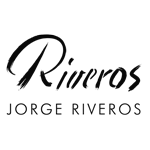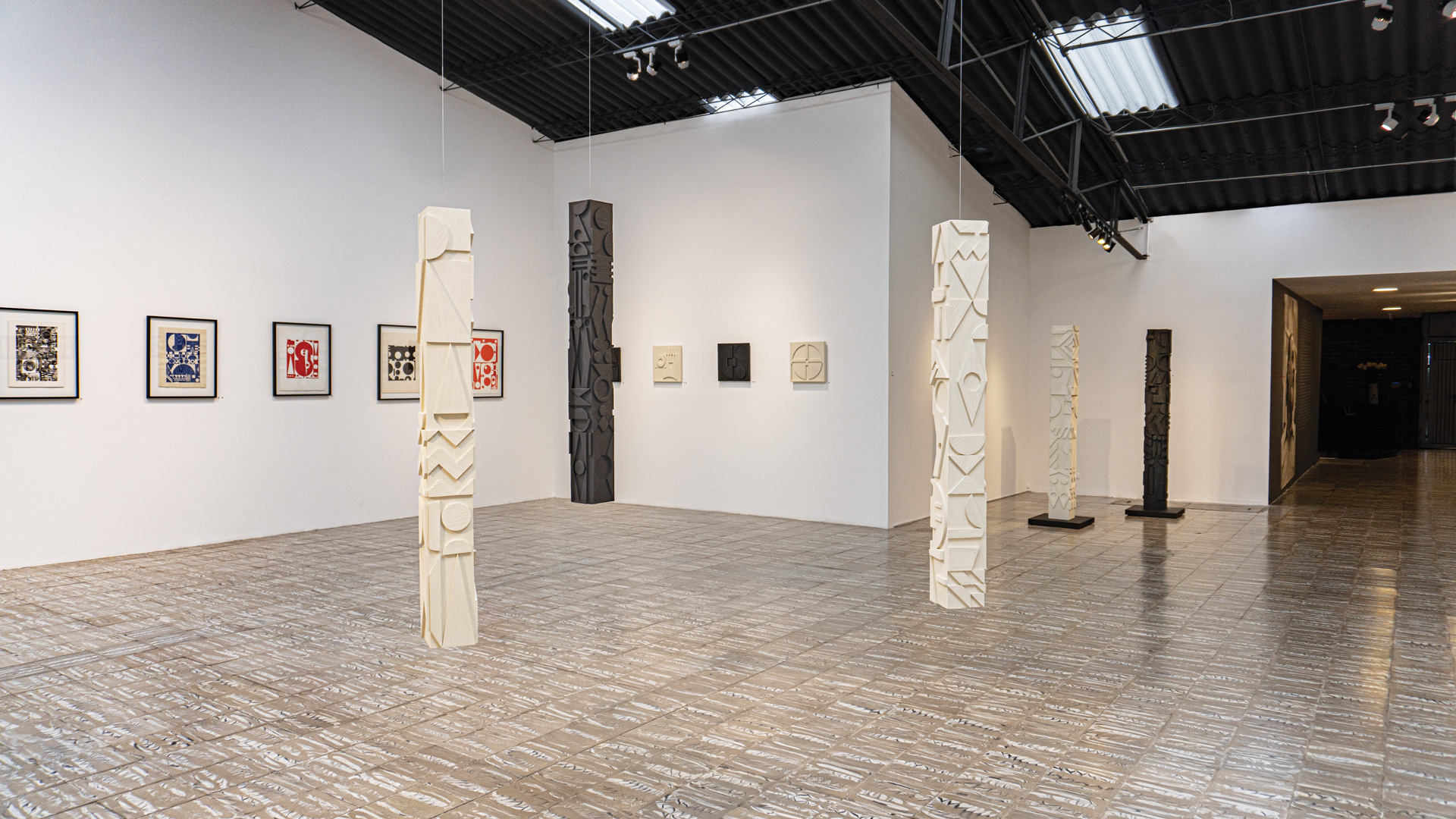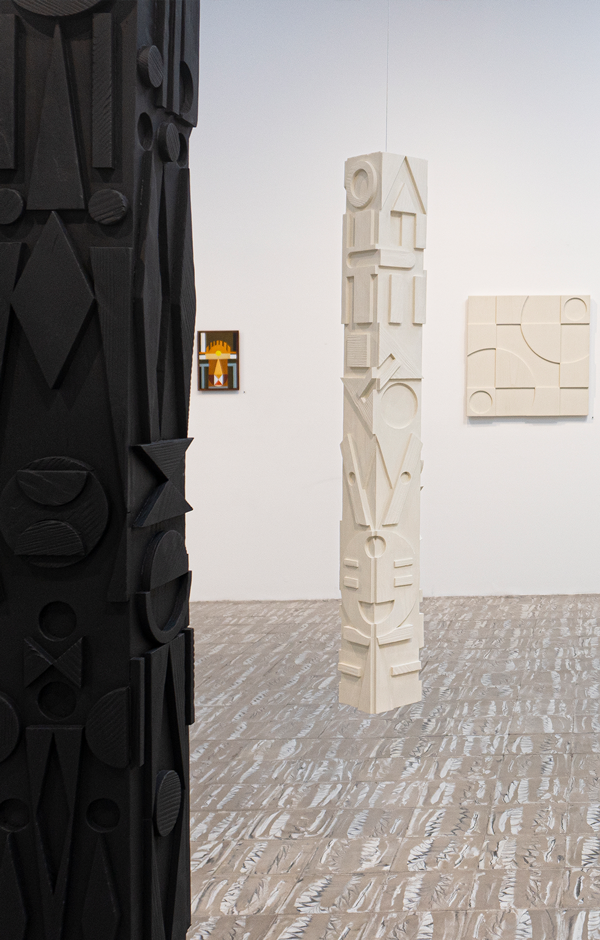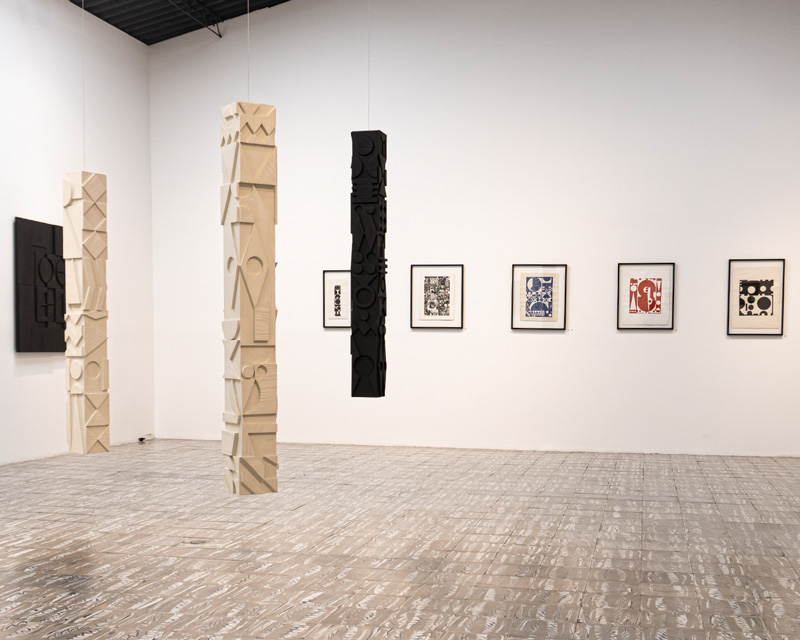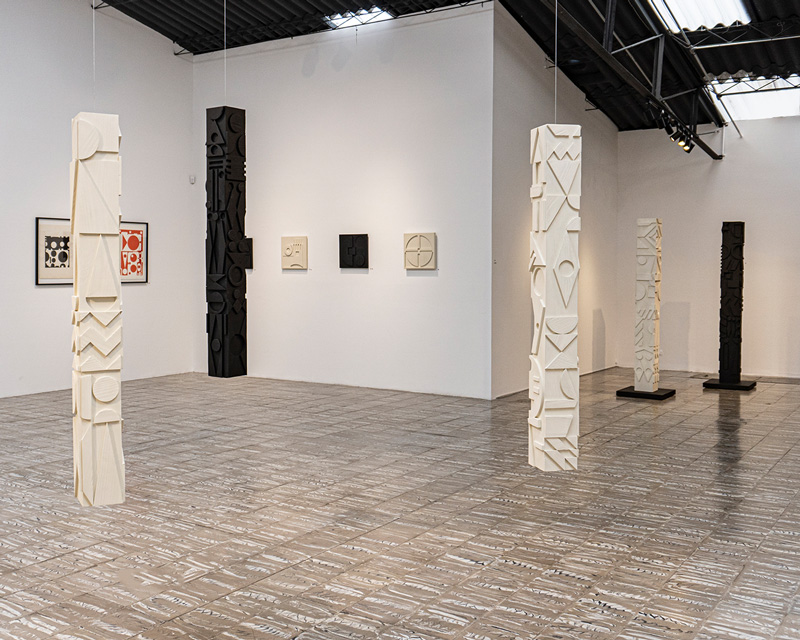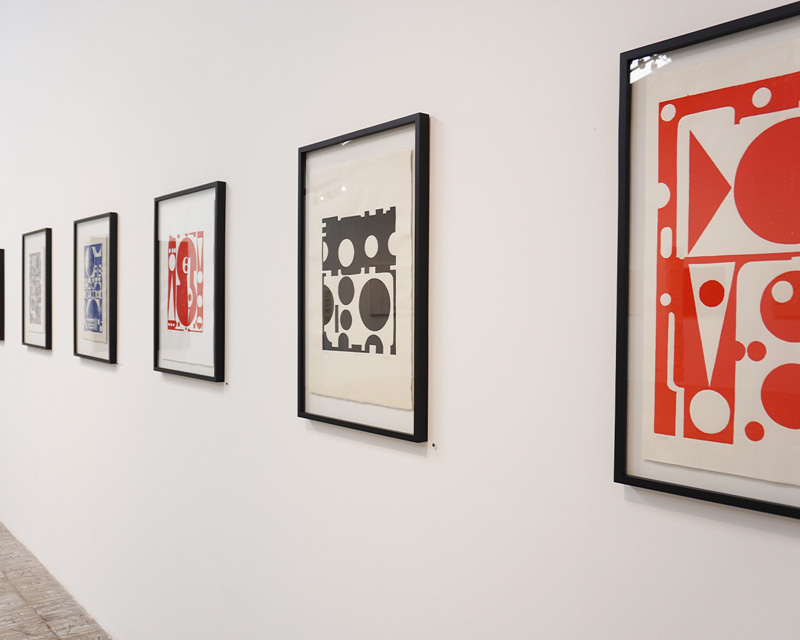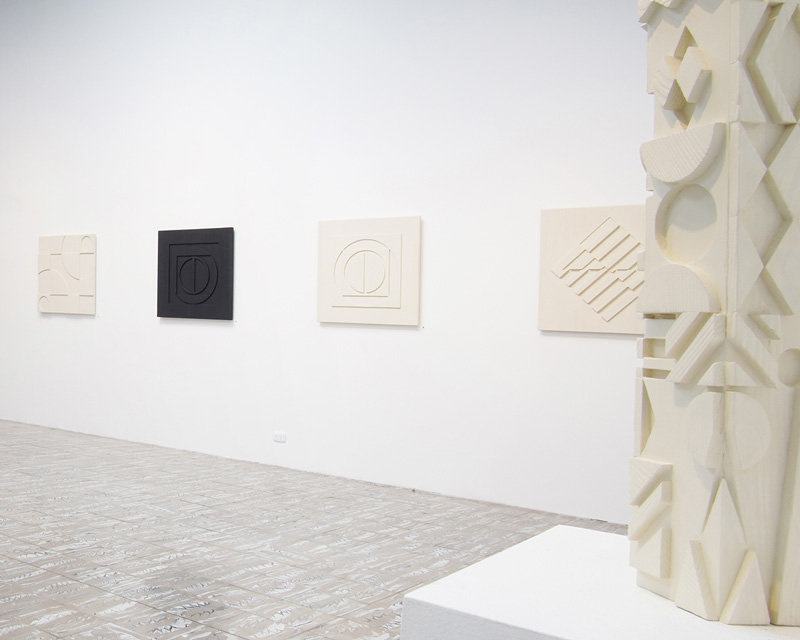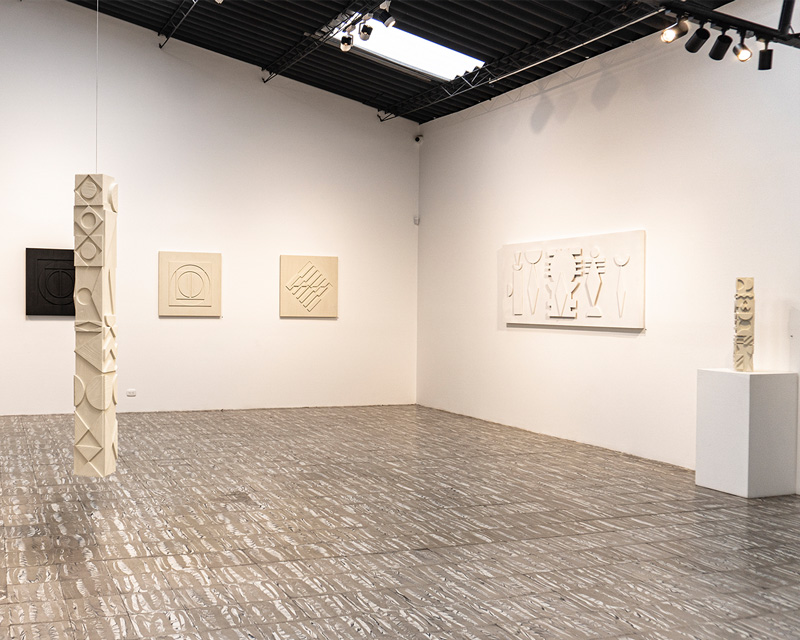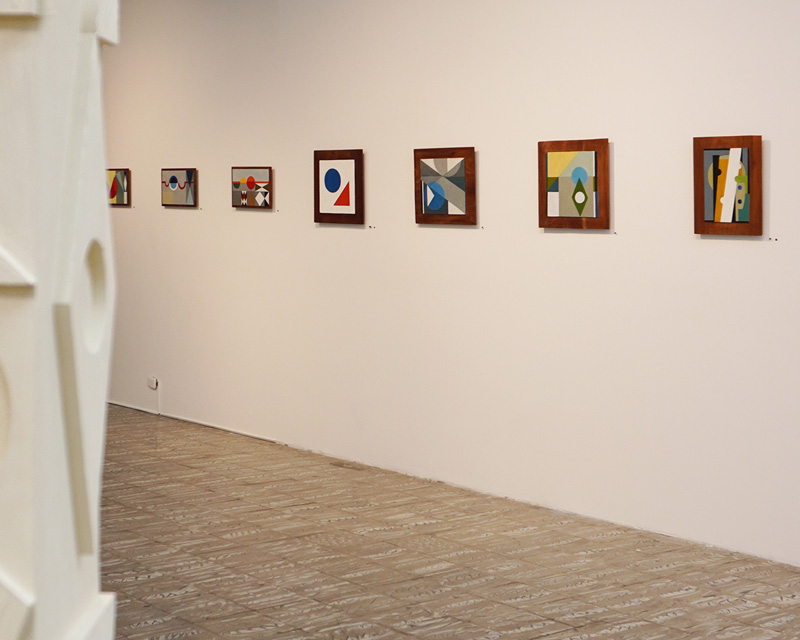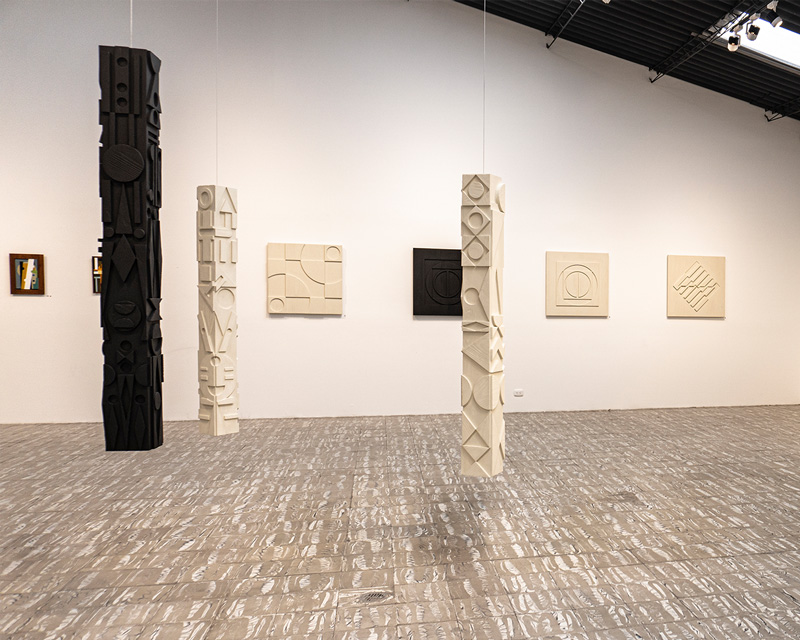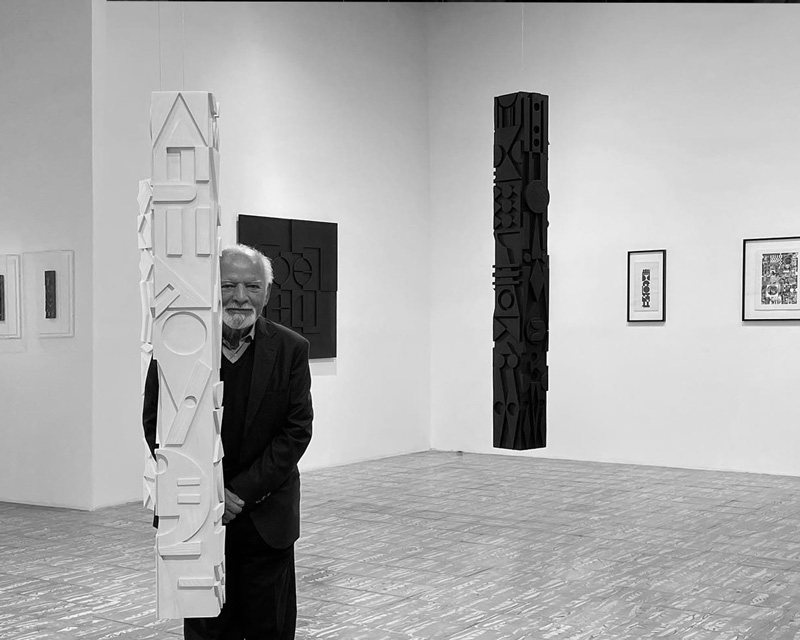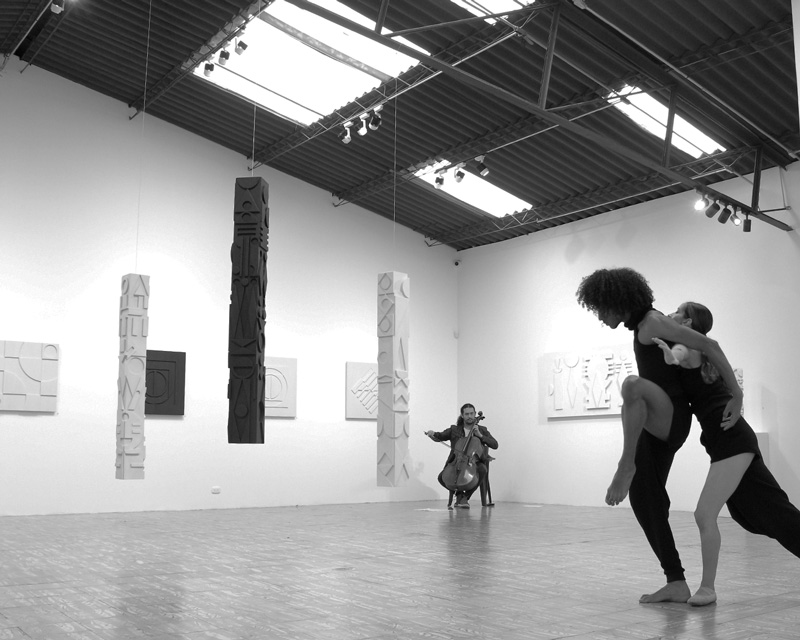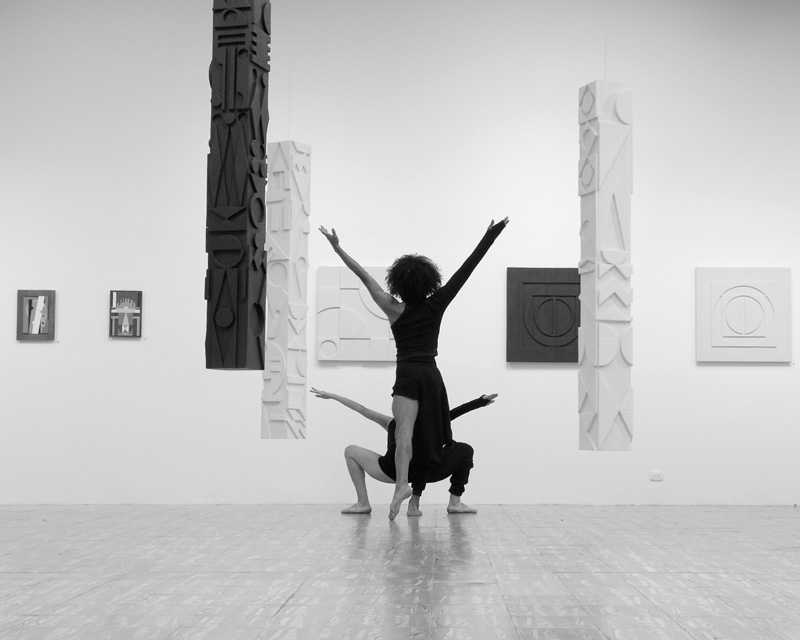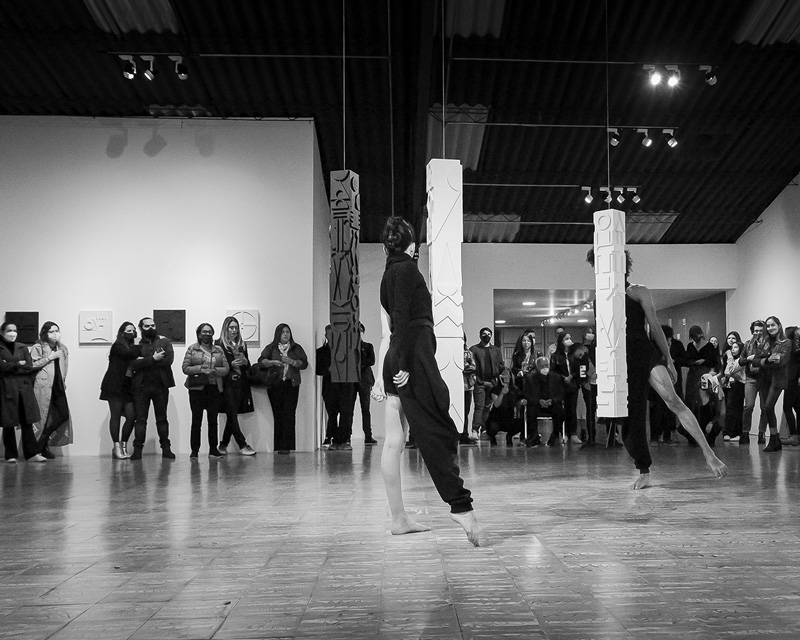Constructive Forms
Origins and Progression
About
The study of the historical evolution of concretism in Latin America in our previous exhibits has led us to discover the connections of geometric abstraction in Colombia in the hitherto unknown facet of one of the great representatives of the genre, master artist Jorge Riveros.
"Constructive Forms" presents the most seminal works in the artistic evolution of master Riveros and for the first time in his exhibition history his links as a founder member of one of the most influential artistic groups in post-war Europe, the Semikolon Künstlergruppe in Germany (1968). The exhibition emphasizes the primary use by the artist of materials such as wood in sculptural totemic forms, public identity of the group in the city of Bonn in the 1960’s, the use of such in monochrome wall reliefs, and woodcut prints (vintage xylography) presenting a historical review of never before exhibited works in the artistic life of master Jorge Riveros.
Elvira Moreno, Gallery Director
.
Curator’s word
Jorge Riveros. Constructive forms. Origins and Progression is a unique opportunity to get closer to the formal universe of master Riveros and his peculiar way of working. Here we find a world of rigorously calculated geometric shapes, perfectly meshed through polished and pristine shapes in stark black and white with some hints of pure color. Against this apparent coldness, master Riveros contrasts the warm material of wood in the reliefs, columns, woodcuts, and oil paintings on wood present in the show. This juxtaposition between the coldness of the geometry and the warmth of the wood connects the master with a long tradition of artists and artisans who, since pre-Hispanic times to the present, have found a harmonious relationship between them. At the same time, his wooden constructions reveal a confident and mature artist whose works offers a fresh and leisurely look at the languages of constructivism. Undoubtedly, Riveros's work is a fundamental historical reference to understand the development of geometric abstraction in Colombia and Latin America.
Ana M. Franco ,Vice-president, Association for Latin American Art | Universidad de los Andes
